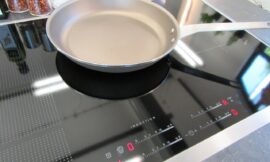Choosing the right cooking technology is a crucial decision for any kitchen. Induction stoves and gas stoves are two popular options, each offering unique advantages and considerations. In this article, we will compare induction stoves and gas stoves, exploring factors such as efficiency, performance, safety, and convenience to help you make an informed decision for your cooking needs.
Efficiency and Energy Consumption:
Induction Stove: Induction stoves are renowned for their efficiency. They utilize electromagnetic induction to directly heat the cookware, resulting in minimal heat loss and faster cooking times. The heat is generated precisely where it is needed, reducing wasted energy. Induction stoves are highly efficient and can boil water faster than gas stoves, making them a great choice for energy-conscious individuals.
Gas Stove: Gas stoves have long been preferred for their instant heat and precise temperature control. However, they are less efficient compared to induction stoves. Gas flames produce heat that radiates outwards, leading to heat loss and slower cooking times. Additionally, gas stoves may release small amounts of carbon monoxide, which requires proper ventilation for safe use.
Performance and Cooking Control:
Induction Stove: Induction stoves offer excellent performance and precise cooking control. They provide rapid and even heating, allowing for consistent results. Induction technology offers instant heat adjustments, enabling quick responses to temperature changes. With precise control over heat levels, induction stoves excel in tasks that require precise cooking techniques, such as simmering, searing, and melting delicate ingredients.
Gas Stove: Gas stoves are favored by many chefs for their immediate heat response. The flame provides visible heat, allowing for intuitive adjustments. Gas stoves provide a broad range of heat levels, giving cooks greater control over the cooking process. The direct flame allows for traditional cooking techniques like open-flame grilling, charring, and wok cooking.
Safety Considerations:
Induction Stove: Induction stoves have several safety advantages. The cooktop itself remains relatively cool during cooking since heat is generated directly in the cookware. This reduces the risk of burns and provides a safer environment, especially for households with children. Additionally, induction stoves often come with safety features such as automatic shut-off when no cookware is detected, making them a reliable choice for safety-conscious users.
Gas Stove: Gas stoves require cautious handling due to the open flame. There is a risk of burns and accidental fires if the flame is left unattended or not properly extinguished. Gas leaks can also pose safety hazards. However, modern gas stoves are equipped with safety features such as flame failure protection and gas leak sensors to mitigate these risks.
Convenience and Installation:
Induction Stove: Induction stoves offer convenient and easy-to-clean surfaces. The flat and smooth glass-ceramic cooktop is simple to wipe down, without the hassle of grates or burners. Induction stoves are also compatible with a wide range of cookware, as long as it has a magnetic base. However, installation may require a dedicated electrical circuit and proper wiring.
Gas Stove: Gas stoves provide the convenience of instant heat and a familiar cooking experience for those accustomed to traditional gas cooking. They require a natural gas or propane supply and proper ventilation for safe installation. Cleaning gas stoves can be more challenging due to the presence of grates and burners.
Conclusion:
The choice between an induction stove and a gas stove depends on your priorities and cooking preferences. Induction stoves offer energy efficiency, precise cooking control, and enhanced safety features. On the other hand, gas stoves provide immediate heat response, a wide range of heat levels, and a traditional cooking experience. Consider factors such as efficiency, performance, safety, and convenience to determine which cooking technology best suits your needs and culinary style.




